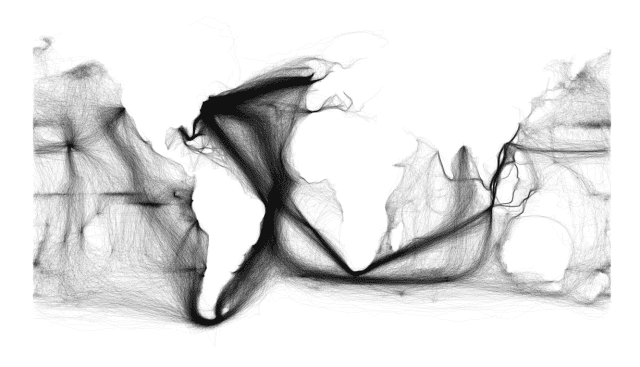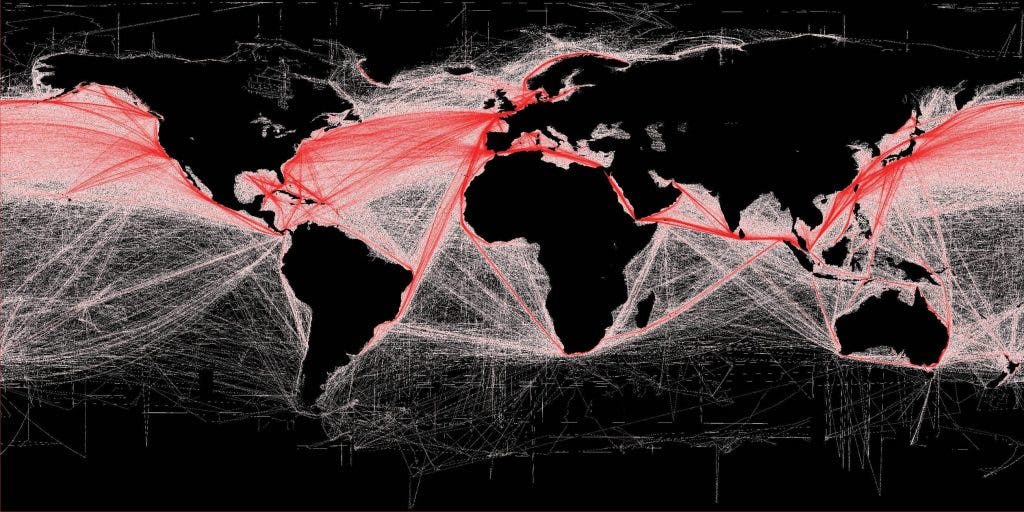Take millions of data points, each one a geolocated entry plucked from a digitised collection of 18th- and 19th-century ships’ logs, paint them black on a white canvas, and what do you get? This magnificent view of the ocean!

All voyages from the ICOADS US Maury collection. Ships tracks in black, plotted on a white background, show the outlines of the continents and the predominant tracks on the trade winds. Original source here.
There may be no features on this map, but you can clearly distinguish the continents and the oceans. The geographically trained eye will also notice something else – some trade routes are missing. That’s right, the Red Sea, the Persian Gulf, the eastern half of the Mediterranean, the Black Sea, the northern shores of Siberia, Canada and Australia don’t have any data around them, because there was just too little data available. This doesn’t mean that they weren’t circulated trade routs, but the ships didn’t keep any logs, or the logs didn’t survive.
The center of the trade route interest is clearly North America, but there’s also something weird going on in the Pacific. You can see three sets of horizontal markings off South America’s equatorial bulge. What’s up with those? There are no obvious destinations at the end of those lines… so then why then were ships traveling there? A reader from BigThink suggests:
“These are the doldrums, the point where the trade winds rarely blow. The sail ships of the age simply got stuck in that region until a random weather condition comes up and throws some gust of wind that can take the ship out of there”.
The word doldrum is pretty strange one – it comes from historical maritime usage, in which it refers to those parts of the Atlantic Ocean and the Pacific Ocean affected by the Intertropical Convergence Zone, a low-pressure area around the equator where the prevailing winds are calm. Basically, you have no winds and nothing to do; of course, with modern engines, you no longer require favorable trade winds. Today, the word doldrum is used figuratively, signifying a state of inactivity, mild depression, listlessness or stagnation.
A similar map today would look like this:
As you can see, there are major differences, brought by the channels of Panama and Suez which basically changed the way maritime shipping is done, and also engines which eliminated the need for trade winds.










